
Fighting for our lives – #NoDAPL in historical context
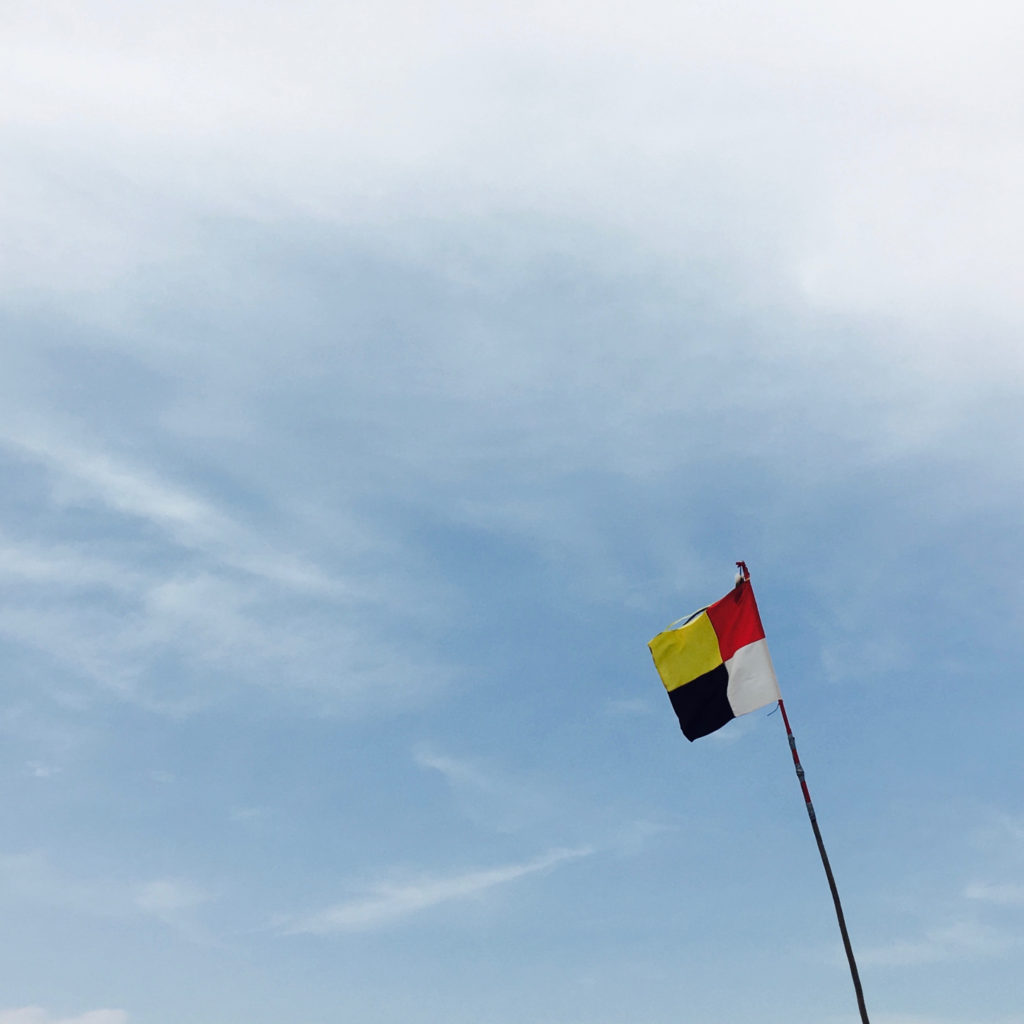
Editors note: Last week, the following article was published on The Red Nation website. The Volcano editors have republished it here with permission from the author. We find the analysis to place the NODAPL resistance into an important historical context. It also relates ongoing, hundreds of years long, Indigenous movements against settler colonialism in North America to anti-capitalist movements and analyses. We see these resistances as deeply intertwined, and we encourage our readership to learn more about NODAPL in this reflective, historical, analytical piece. Thanks to Nick Estes and The Red Nation for allowing us to republish this article in our weekly newsletter.
Little has been written about the historical relationship between the movement against the Dakota Access Pipeline and the longer histories of Oceti Sakowin (The Great Sioux Nation) resistance against the trespass of settlers, dams, and pipelines across the Mni Sose, the Missouri River. This is a short analysis of the historical and political context of the #NoDAPL movement and the transformative possibilities of the current struggle.
Thousands have camped along the banks of the Missouri River at Cannon Ball in the Standing Rock Sioux Indian Reservation to halt the construction of the Dakota Access Pipeline (DAPL), which promises to carry half a million barrels of heavy crude oil a day across four states, under the Missouri River twice, and under the Mississippi River toward the Gulf of Mexico for global export. Camp Oceti Sakowin, Red Warrior Camp, and Sacred Stone Camp, the various Native-led groups standing in unity against DAPL, have brought together the largest, mass-gathering of Natives and allies in more than a century, all on land and along a river the Army Corps of Engineers claims sole jurisdiction and authority over.
How and why did this happen?
In 1803 the wasicu — the fat-takers, the settlers, the capitalists — claimed this stretch of the river as part of what became the largest real estate transaction in world history. The fledgling U.S. settler state “bought” 827 million acres from the French Crown in the Louisiana Purchase and sent two white explorers, Lewis and Clark, to claim and map the newly acquired territory. None of the Native Nations west of the Mississippi consented to the sale of their lands to a sovereign they neither recognized nor viewed as superior. It was only after we rebuffed Lewis and Clark for failing to pay tribute for their passage on our river that they labeled the Oceti Sakowin “the vilest miscreants of the savage race.” Thus began one of the longest and most hotly contested struggles in the history of the world.
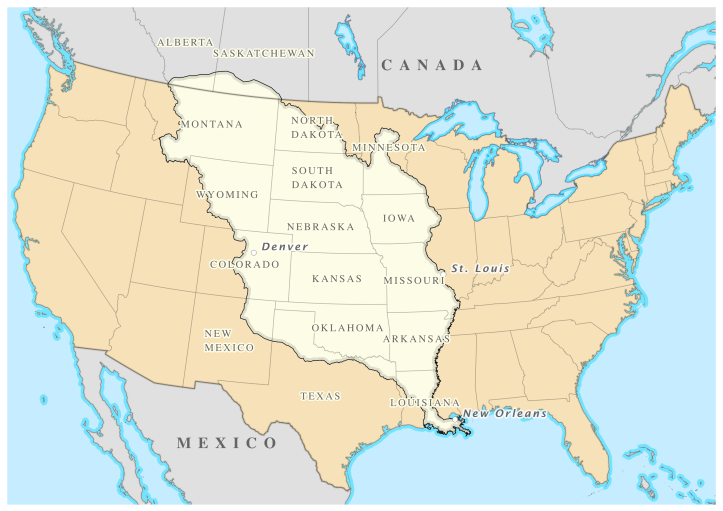
For the next hundred years, the U.S. led various unsuccessful military campaigns to suppress, annihilate, and dispossess us of our rightful claim to the river and our lands. Despite popular belief, we were never militarily defeated. Red Cloud’s War and the War for the Black Hills led to the military defeat of the U.S. Calvary, most famously the annihilation of General George Armstrong Custer’s forces at the Battle of Greasy Grass in 1876. These wars, for our part, were entirely defensive. The Oceti Sakowin signed peace treaties with the invading settler government. The 1854 and 1868 Fort Laramie treaties provided temporary reprieve and defined the vast 25-million-acre territory of what became the Great Sioux Reservation, which stretched from the eastern shore of the Missouri River to the Bighorn Mountains. Four decades of intense warfare, however, took its toll. More than ten million buffalo were slaughtered to starve us out. Settler hordes invaded and pillaged our Black Hills for its gold. Our vast land base diminished and the treaties were nullified when Congress passed the Indian Appropriations Act of 1876, which abolished treaty-making with Native Nations, and the Black Hills Act of 1877, which illegally ceded the Black Hills and created the present-day reservation system.
The Oceti Sakowin has vigorously opposed these bald imperialistic maneuvers to usurp our self-determining authority over our lives and lands. Settler society entreated the Oceti Sakowin for the 1854 and 1868 agreements, not the other way around. We entered these relationships with the understanding that both parties respected a common humanity with the people and the lands. In our view, the settler state lost its humanity when it violated the treaties. Every act on our part to recover and reclaim our lives and land and to resist elimination is an attempt to recuperate that lost humanity — humanity this settler state refuses and denies even to its own.
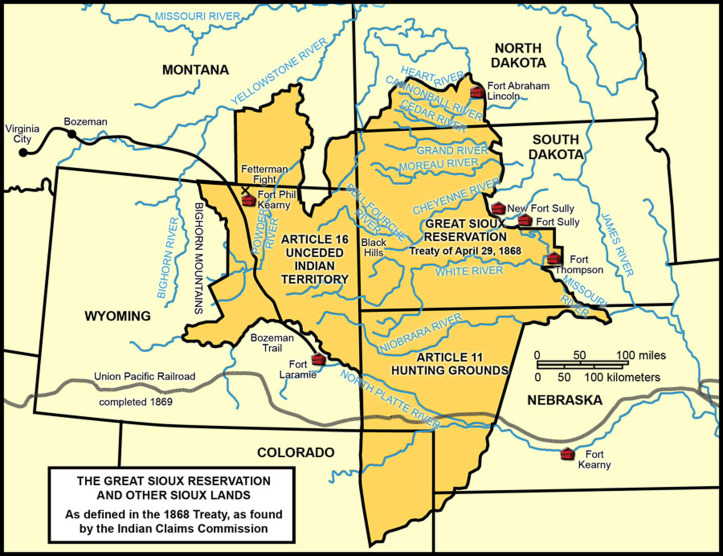
South Dakota and North Dakota statehood also played a major role in suppressing the Oceti Sakowin. Although we have never signed any treaties with these states, they lay claim to the destinies of our lands, our river, and our people. To do so, they have always used violence and hatred. In 1890, a year after statehood, these two states drummed up anti-Indian sentiment to further break up and open reservation lands for settlement. As a result, they fabricated the Ghost Dance crisis; called for federal troops to intervene to protect white property that resulted in the assassination of our military and political leaders such as Crazy Horse and Sitting Bull; and resulted in the killing of over 300 mostly unarmed women, children, and elders at Wounded Knee in the Pine Ridge Indian Reservation.
Outright murder was never enough. The Dawes Allotment Act of 1887 and the creation of five smaller reservations attempted to factionalize the Oceti Sakowin and opened up “surplus” lands to white homesteaders. From 1907 to 1934, millions of acres of the remaining Great Sioux Reservation were lost. In the early 1900s, Missouri River Basin states began organizing to usurp Native water rights for large-scale irrigation projects. These states envisioned a dam system that would create large reservoirs that would primarily flood Native lands. But there was a major problem. In 1908, a U.S. Supreme Court decision held that tribes maintained access and control of water within original treaty territory, even if that territory was diminished. This became known as the Winters Doctrine. For the Missouri River, the Oceti Sakowin possessed the prior claim to both the river and its shorelines as spelled out in the 1851 and 1868 Fort Laramie Treaties.
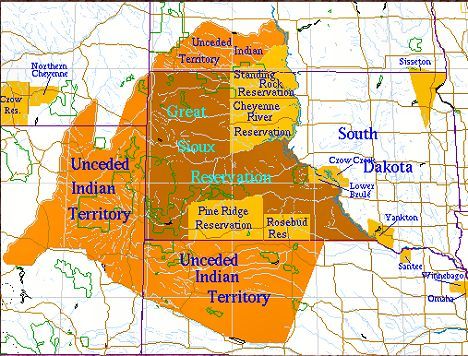
An opportunity for the states arose. After unseasonal mass flooding, Congress passed the Flood Control Act in 1944 — or what became known as the Pick-Sloan Plan authorizing the Army Corps of Engineers and the Bureau of Reclamation to erect five dams on the mainstem of the river. All of which targeted and disproportionately destroyed Native lands and lives. Of the five Pick-Sloan dams, four flooded the lands of seven nations of the Oceti Sakowin: the Santee Sioux Tribe, the Yankton Sioux Tribe, the Sicangu Oyate, the Lower Brule Sioux Tribe, the Crow Creek Sioux Tribe, the Cheyenne River Sioux Tribe, and the Standing Rock Sioux Tribe. Of the 611,642 condemned acres through eminent domain in what was called the “taking area,” these nations lost 309,584 acres of vital bottomlands. Inundation also forced more than a thousand Native families, in patent violation of treaties and without their consent, to relocate. Entire communities were removed to marginal reservation lands, and many were forced to leave the reservation entirely. As a result of condemnation, the Army Corps of Engineers claims sole jurisdiction over the river and its shoreline.
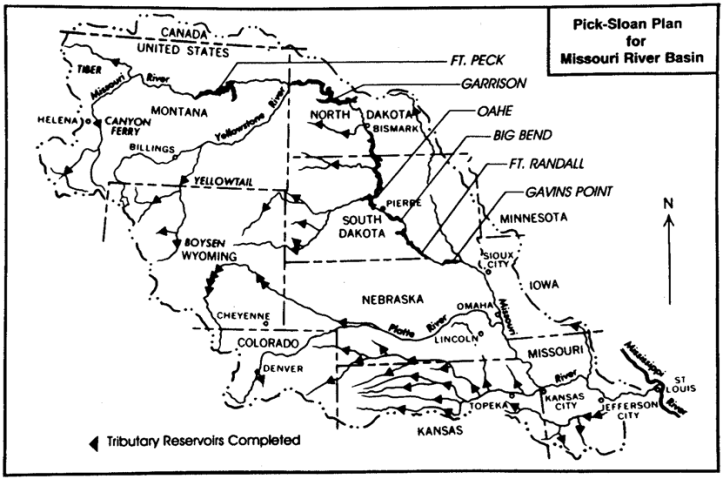
The dams, which promised and delivered wholesale destruction, coincided and worked in tandem with the federal policies of termination and relocation. In 1953, Congress passed House Concurrent Resolution 108 (HCR 108) that inaugurated termination policy, and called for the immediate termination or ended federal recognition of the Flathead, Klamath, Menominee, Potawatomi, and Turtle Mountain Chippewa tribes. That same year, Congress passed Public Law 280 (PL 280) that authorized states to assume criminal and civil jurisdiction over Native lands. The Bureau of Indian Affairs supported these programs and carried out the Indian Relocation Act of 1956 that relocated thousands from the reservation to far-off urban centers. HCR 108, PL 280, relocation, and the Pick-Sloan dams did not just promote assimilation — they enforced genocide and elimination.
Through termination, relocation, and massive flooding, however, colonialism created its own gravediggers. The Oceti Sakowin unified to thwart the state of South Dakota’s attempts to implement PL 280 to overthrow Native governments and assume control over their lands. Natives on relocation also began to organize. Groups such as the National Indian Youth Council and the American Indian Movement (AIM) formed in the urban centers to combat the wholesale destruction of Native life on- and off-reservation. In 1973, AIM occupied Wounded Knee in the Pine Ridge Indian Reservation, which was a culmination of more than a decade of Red Power organizing. The occupation was the catalyst for a mass gathering of thousands at Standing Rock in 1974, which resulted in the founding of the International Indian Treaty Council. At Standing Rock, more than 90 Native Nations from around the world built the foundations of what would become four decades of work at the United Nations and the basis for the 2007 Declaration on the Rights of Indigenous Peoples.
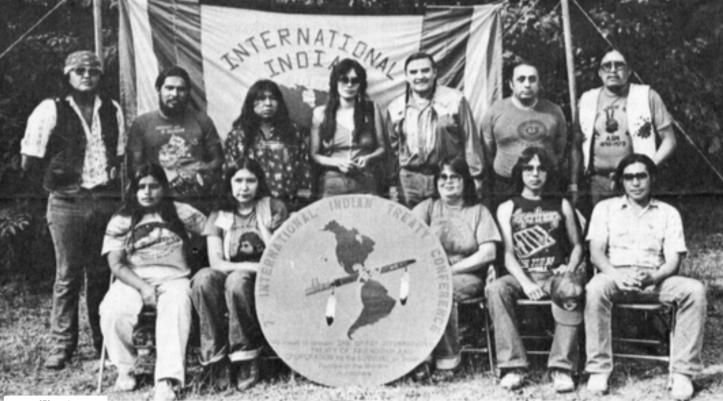
The anti-colonial uprising taking place in Oceti Sakowin treaty territory and spilling onto the world stage was met with violent state repression. AIM leaders were assassinated and many were imprisoned. For example, Native leader Leonard Peltier, who participated in this movement for the life and dignity of his people, to this day sits behind bars as one of the longest serving political prisoners in United States history. From 1977 to 2012 South Dakota’s prison population increased 500 percent. One-third of its prison population is Native, although Natives make up only nine percent of the total population.
With the advent of tarsands extraction and heavy crude pipelines destroying water supplies and scorching the earth, Natives and the Oceti Sakowin have once again reunited. This unification first targeted tarsands and pipeline construction in so-called Canada in First Nations’ territory. Successful blockades have halted pipelines. In 2014, the Oceti Sakowin began a massive organizing effort, with help from allies, against the Keystone XL (KXL) pipeline that, too, threatened to cross the Missouri River. Our Nation is made up of some of the poorest people in the Western hemisphere organizing to oppose a fossil fuel industry made up of some of the most powerful and wealthiest people on the planet. Despite these odds KXL was defeated on November 6, 2015. After mass protests, the Obama administration denied the pipeline’s permit.
Two important lessons were drawn from the KXL struggle that were carried into #NoDAPL. The power of multinational unity between Natives and non-Natives was one of the movement’s successes. The other proved the transformative power and potential of anti-colonial resistance to successfully mobilize poor people against the rich and powerful — and win!
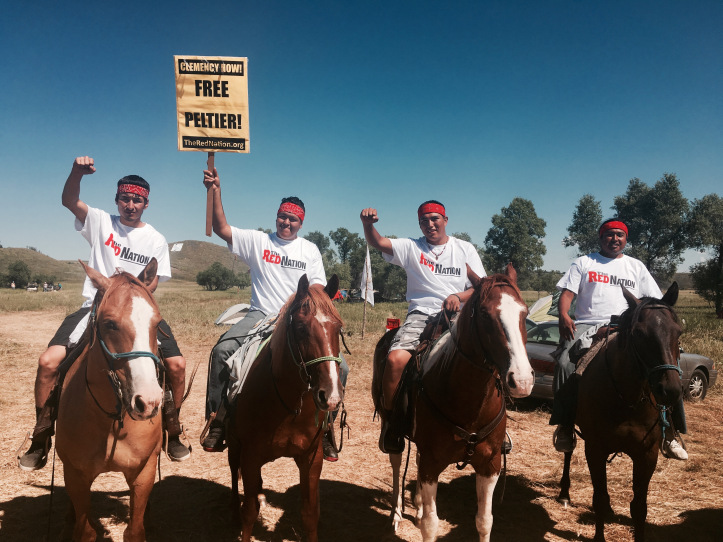
Like our ancestors’ wars of the nineteenth century, our current war is also defensive — it is to protect water and land from inevitable spoliation in the name of profit. The #NoDAPL movement is explicitly nonviolent, which accounts for its mass appeal to Native and non-Native communities. In spite of this, political violence as a tactic of state repression has emerged against water protectors who engage in nonviolent direct action to disrupt the construction of the pipeline as well as
those not engaged in direct actions. Natives at or near camp — whether involved in direct actions or not — are also targets for surveillance and repression. The camp and the Standing Rock reservation are under constant surveillance. The reason: Native bodies stand between corporations and their money. Halting the accumulation of capital, which in this context is the exploitation of our river and lands, has piqued settler ire and spite.
The prolonged peaceful encampment practices an unsettling counter-sovereignty. It has drawn the support and solidarity of more than 200 Native Nations and countless thousands of allied forces sending a clear message to corporate interests: North Dakota cannot manage its Indians and the “Indian Problem” is out of control. After all, controlling the “Indian Problem” has always meant maintaining unrestricted access to Native lands and resources and keeping Indians silent, out of view, and factionalized. At Standing Rock, an unarmed, nonviolent prayer camp poses such a serious threat to settler proprietary claims that North Dakota Governor Jack Dalrymple, who has direct ties to the oil and gas industry, has deployed the full force of the Highway Patrol and the National Guards. These forces are not there to service an impoverished Native community or protect the integrity of the land and river. They are there to carry out the will of DAPL backers Energy Transfer Partners, some of the richest and most powerful people in the world who have used attack dogs against unarmed, nonviolent water protectors. More than 60 have been arrested, including journalists. Violent state repression has not ceased.

The Army Corps of Engineers, who maintains jurisdiction over the river in violation of the 1854 and 1868 Fort Laramie Treaties, claims it holds the final say about whether the DAPL can cross the Missouri River. The #NoDAPL encampment, in an exercise in Native sovereignty, sits atop lands claimed by the Corps, who only recently “permitted” the camp’s presence. On September 9, the Department of Interior, the Department of Justice, and the Corps also issued a joint statement halting — for now — the construction of the pipeline under the Missouri River as the Standing Rock Sioux Tribe’s case against DAPL will be considered and reviewed. This was a victory — a temporary halt of construction at a key site — and proof that this enemy, no matter how powerful, violent, or spiteful, too, can be defeated if Native people refuse to back down and continue to act in unity and cooperation. While construction halted under the river, it continues everywhere else. So too do direct actions. So too does the peaceful encampment. And so too must our focus and support on #NoDAPL. The encampment will remain until the pipeline is completely defeated.
Oceti Sakowin and Native resistance, as it has for centuries, will also continue until our common enemy is defeated.
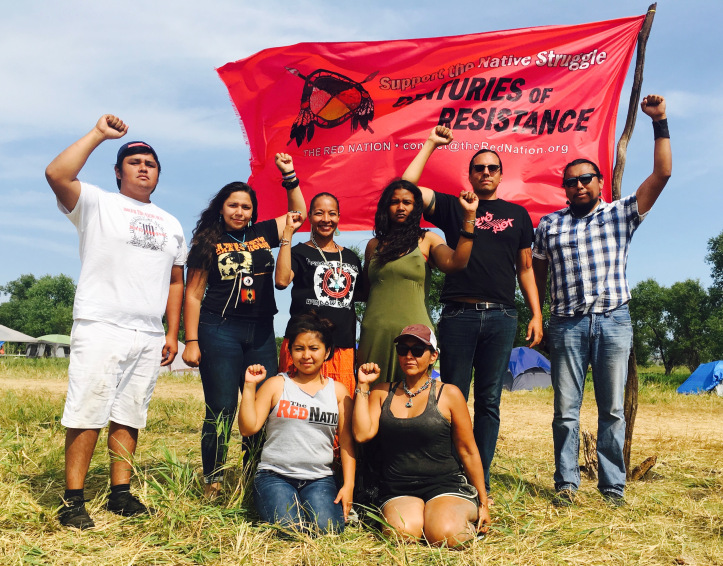
Early lessons from this ongoing struggle can be drawn to help strategize future possibilities:
- The colonial state does not possess, and never has possessed, the moral high ground. It defends corporate access to Native lands and uses violence as a political tactic to maintain its contested authority over the land. The North Dakota National Guard has never in its history been deployed in force against an unarmed “domestic” population– until now. The National Guard and the Highway Patrol protect corporate interests and enforce the colonial state’s monopoly on violence against the most vulnerable and marginalized populations – Native people.
- The prayer camp has galvanized multinational unity, primarily mobilizing everyday people in defense of Native sovereignty, self-determination, and treaty rights.
- Treaty rights, and by default Native sovereignty, protect everyone’s rights. In this case, they protect a vital fresh water source for millions – the Missouri River.
- #NoDAPL anti-colonial struggle is profoundly anti-capitalist. It is the frontline. It is the future.
- The profits that corporations like Energy Transfer Corporation reap from colonial projects like the DAPL should be seized and used to repair damage to the land and river. With this also comes a long-term goal to restore the Missouri River to its rightful protectors – the Oceti Sakowin – and its natural path. This means the Army Corps of Engineers must relinquish its claim to the river and begin to demolish the Pick-Sloan dams so that the river and its people may once again live.
